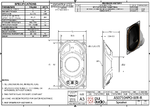Audioguru
Advanced Member level 7
- Joined
- Jan 19, 2008
- Messages
- 9,457
- Helped
- 2,151
- Reputation
- 4,302
- Reaction score
- 2,008
- Trophy points
- 1,393
- Location
- Toronto area of Canada
- Activity points
- 59,719
Yes, I have seen errors and omissions on datasheets.just because the data sheet does not mention (or even know about) a remedy, does not mean that remedy should not be implemented.
Maybe the voltage on the Bypass capacitor should be monitored to see if the amplifier turns on quicker if the voltage on it has dropped close to 0.6V.


